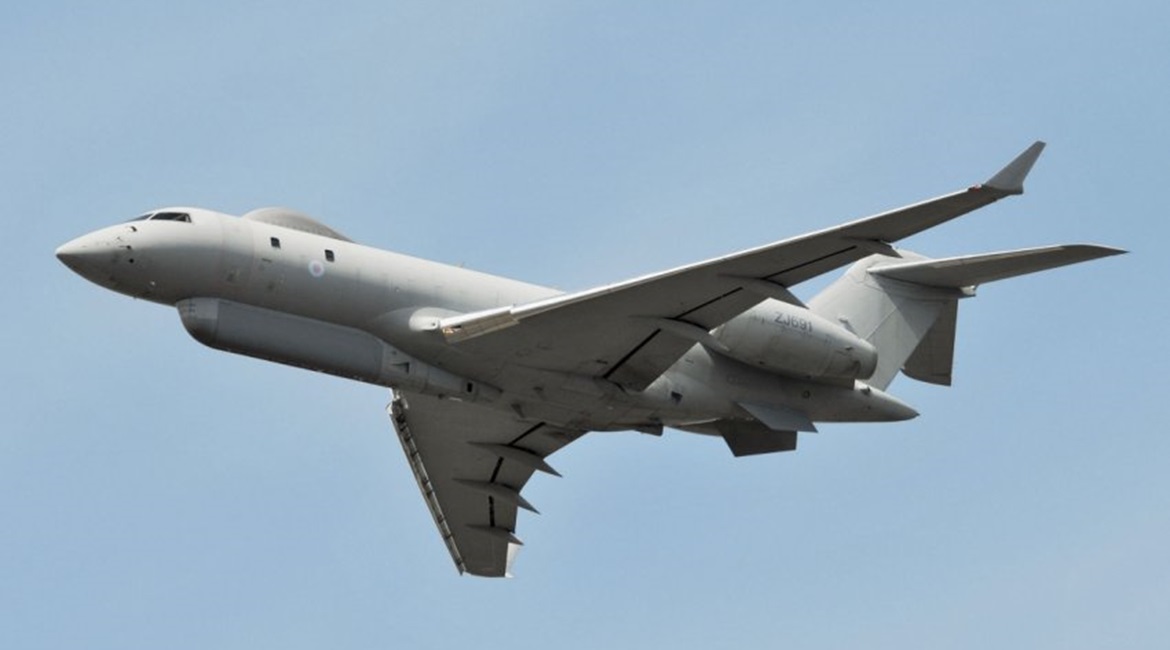
The UK Royal Air Force’s (RAF’s) fleet of Raytheon Sentinel R1 Airborne Stand-Off Radar (ASTOR) wide-area ground-surveillance aircraft flew its final operational mission on 25 February.

Having already survived a number of proposed retirement dates, the Sentinel R1 ASTOR is set to be officially withdrawn from UK service in March. (Janes/Patrick Allen)
Aircraft callsign ASCOT 7303 was one of four Sentinels flown by 5 (Army Cooperation) Squadron (a fifth had been previously retired and held in storage), which flew the type’s final sortie out of RAF Waddington in Lincolnshire ahead of the fleet’s retirement in March. As recorded on flight tracker apps, this last operational sortie took ASCOT 7303 near the Russian enclave of Kaliningrad, as well as Belarus.
Based on the Global Express business jet, the Sentinel R1 provided the air component of the wider ASTOR system that combined the dual-mode synthetic aperture radar (SAR)/ground moving target indicator (GMTI) fitted aboard the aircraft with mobile tactical ground stations and a containerised operational-level ground station. This capability provided UK forces with the ability to conduct long-range, battlefield-intelligence, target imaging and tracking, and surveillance.
Raytheon delivered the fleet to the RAF from June 2007 to February 2009. The Sentinel gained much credit for its work over Afghanistan in support of wider collation forces, with the Chief of the Air Staff at the time, Air Chief Marshal Sir Stephen Dalton, saying that the niche capability was highly prized by US forces in particular.
Looking to read the full article?
Gain unlimited access to Janes news and more...




